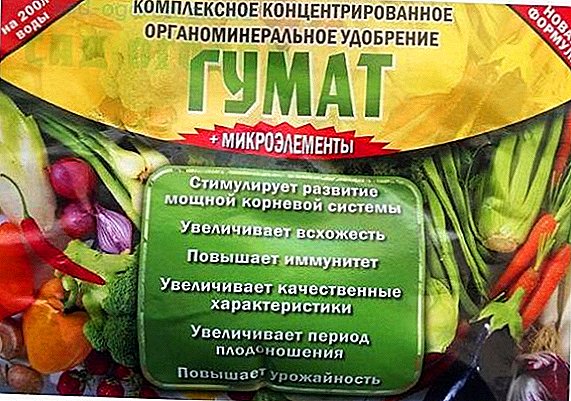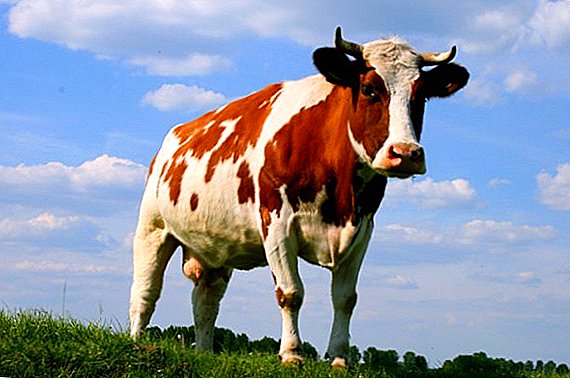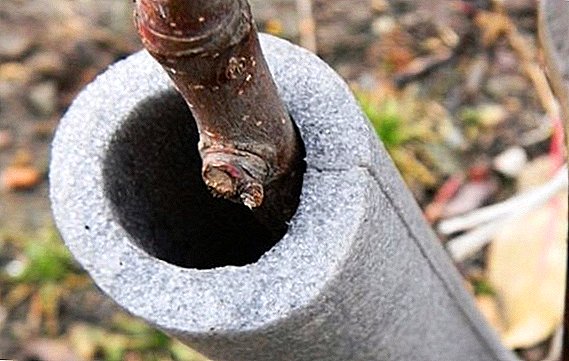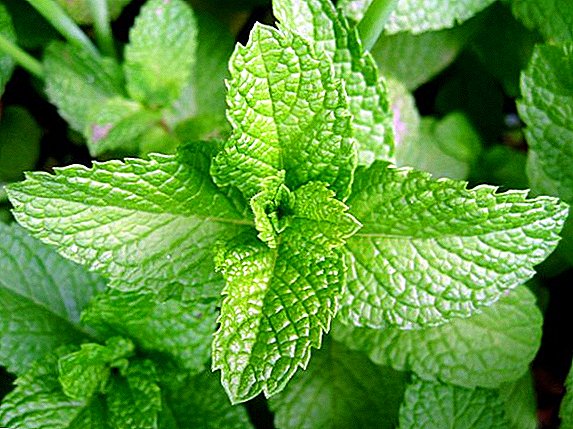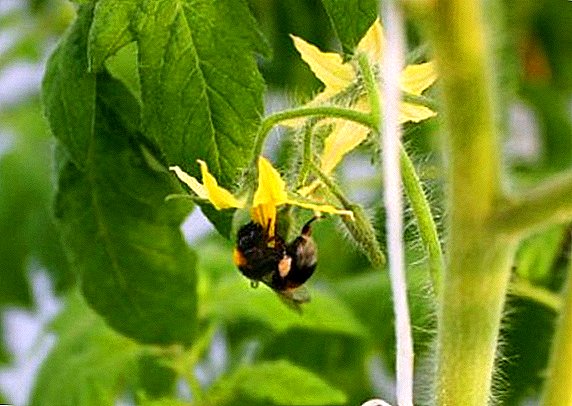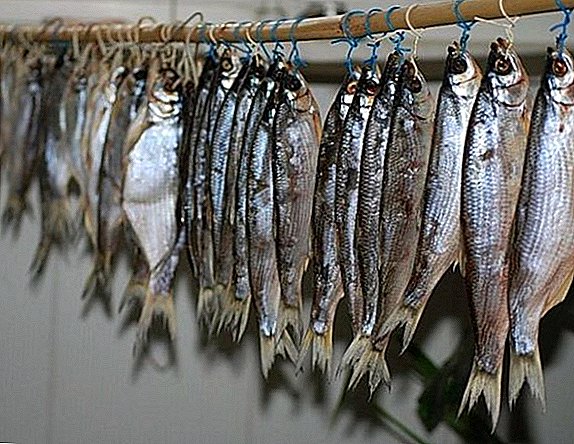 Dried fish can be easily obtained in many stores, but real lovers prefer to cook such a delicacy on their own. After all, only by preparing the dish with your own hands, you can be completely confident in its safety. But to make the fish tasty, you should know some of the rules and secrets of its preparation.
Dried fish can be easily obtained in many stores, but real lovers prefer to cook such a delicacy on their own. After all, only by preparing the dish with your own hands, you can be completely confident in its safety. But to make the fish tasty, you should know some of the rules and secrets of its preparation.
What fish can be dried
Usually the fishermen who brought home the catch are set aside to dry or to dry a small or medium-sized fish. Large representatives are rarely used for these purposes, as they were originally intended for frying or baking. But this does not mean that a large fish can not be withered.
Just to make it take a little more time. In the fishing language, drying fish is called "making taranka." But this does not mean at all that only ram is suitable for cooking delicacies.
What types of fish can be dried:
- roach, crucian carp and ram;

Did you know? Sometimes a tornado, flying past rivers or the ocean, picks up shoals of fish, and carries them far overland, where it rains fish. These "fish rains" have happened more than once over thousands of years. Roman writer Pliny the Younger describes this phenomenon in the first century of our era.
- roach and gustera;

- podleschik and chekhon;

Get familiar with the technology of smoking fish.
- bleak and ide;
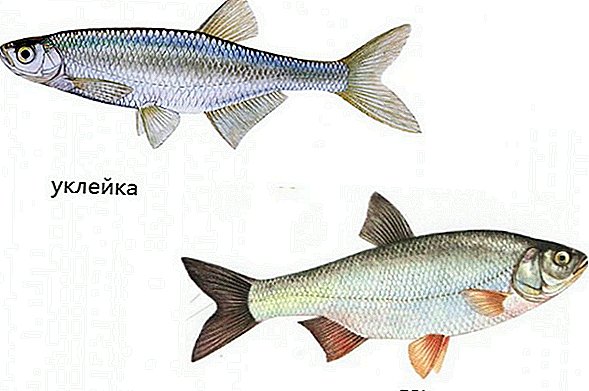
- perch and pike;

- carp and capelin;

Did you know? Like humans, fish need oxygen for breathing. Therefore, if there is not enough oxygen in the water, the inhabitants of the reservoir may suffocate and drown.
- mackerel and rudd;

- perch and bream.
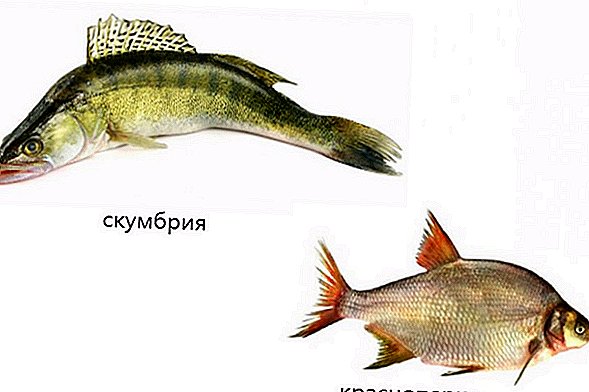
You can vyalit any fish, but it is important to bear in mind that each variety has its own differences in taste:
- Fish predators - these include pike, perch and pike perch, have dietary (practically fat free) meat, usually white. Dried fish from these breeds is not so "specifically spiritualized", which is important. This is facilitated by the fact that the breed was not originally fat. Dried pike has a special taste, you can never confuse it with other varieties.
- White fish - here can be attributed carp, bream, Guster, ide, sabrefish and other varieties. This is a classic taranka, from these varieties it turns out a fatty and tasty dried product. How much fish is fat depends on the time in which it is caught and the place where it is found. Sometimes the fish is so fat that, when suspended from the dryer, it drops drops of fat.
- Gobies, rotanas - Fishermen do not recommend these species for cooking taranki.
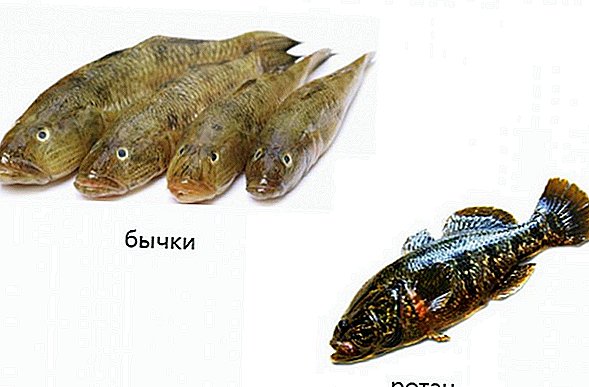 Their meat is tasty, but in the process of drying small fishes become so humbled that it is almost impossible to separate the meat from the dry skin.
Their meat is tasty, but in the process of drying small fishes become so humbled that it is almost impossible to separate the meat from the dry skin.
It must be remembered that fatty fish dries for a long time, and in the future it is poorly and not long stored. During storage can get an unpleasant taste and smell of rancid fat. Fatty varieties can be dried, but in small quantities, and for long-term storage, it is preferable to choose a leaner breed for drying.
You probably will be interested to read about how to breed carp, grass carp and trout at home.
Training
Experts advise just caught fish (intended for drying) to shift the leaves and stalks of old nettle and place in a cool place for a couple of hours, and only then proceed to its salting. Nettle will protect the fish from spoiling on a hot day.
In winter
Not a large fish carcass (up to 500 g) can be salted without gutting.  This is done to ensure that fish meat is saturated with subcutaneous and internal fat and more juicy. In fish carcasses weighing over 500 grams, the abdominal cavity is cleared from the viscera, if the fish was with caviar, then the eggs are put back into the abdomen.
This is done to ensure that fish meat is saturated with subcutaneous and internal fat and more juicy. In fish carcasses weighing over 500 grams, the abdominal cavity is cleared from the viscera, if the fish was with caviar, then the eggs are put back into the abdomen.
Summer
In the summer, gutting all the fish (large and small), because in the hot season all the fish livestock feeds on algae. Water greens are included even in the diet of predatory fish species.
If fresh, caught prey does not clear the abdominal cavity from algae, then it begins to decompose actively within a few hours, which will make the meat rancid and unfit for human consumption.
Important! Any fish that has not been heat treated is a source of serious diseases or parasites. It must be remembered that cold-smoked fish becomes safe, only if it is pre-salted for two weeks before smoking.

The time of death of parasites in fish weighing up to 2 kg when salting in 20% saline brine:
- warm ambassador at a temperature of + 15 ° C ... + 16 ° C - from 9 days;
- cold salting at + 5 ° C ... + 6 ° C - from 13 days;
- dry ambassador (not gutted) - from 13 days;
- dry ambassador (gutted) - from 12 days.
How to fade in stages
Briefly, the drying process can be described as follows:
- salting;
- soaking;
- drying.
Pickling
Fine ground salt, such as "Extra", is not quite suitable for these purposes, it is better to take very large salt.  The effects of salting with fine salt - the possible formation of a thin crust on the fish carcass, which prevents the brine from penetrating inside. There are two ways to salting fish: dry salting and using brine.
The effects of salting with fine salt - the possible formation of a thin crust on the fish carcass, which prevents the brine from penetrating inside. There are two ways to salting fish: dry salting and using brine.
Salting in a brine:
- You can take any suitable size container (food grade plastic, metal), as long as its wall does not oxidize. For these purposes, galvanized containers and technical plastics are not suitable.
- Prepared carcasses tightly placed in a container, if necessary, and in several rows.
- Over the last row is placed a lid on which the oppression is set.
- After that, a brine, which flows into the tank, is carefully poured over the yoke. Tuzluk is poured until it covers a cover that lies a few centimeters above the fish.
When salting is almost always laid down on top of the yoke, it is needed to seal the fish in brine and prevent the occurrence of air chambers in which putrefactive bacteria can develop.
Video: salting fish in brine It can be selected from improvised means, and can be made of wood. Wooden yoke will serve as a fisherman for many years. It is recommended to choose for this purpose a tree that does not emit tannins or resin (aspen, linden).
You probably will be interested in reading about how to cook white carp.
Cooking a brine:
- For 3 liters of water, one and a half cups (250 ml) of coarse salt is added.
- If more brine is needed, the proportions increase.
- Salt is completely dissolved in water and only after this, the fish laid under the yoke is poured with the ready bins.
- Some lovers add sugar to the brink, arguing that it makes the meat taste more tender. In this case, one tablespoon of sugar is added to each kilogram of salt.
If you need to salt the fish directly on fishing, you can use bags made of polyethylene. To do this, dig a hole in the bushes (not in a sunny place) and install a tight bag there to catch the catch.  The neck of the bag is wrapped with a roller and left open. On the salt fish set on top of the oppression and pour brine.
The neck of the bag is wrapped with a roller and left open. On the salt fish set on top of the oppression and pour brine.
Dry Ambassador:
- In this case, you can salt the fish in baskets, boxes of wood or any container, at the bottom of which there are holes for the drain of excess fluid.
- The bottom of the pot (basket, drawer) is covered with a cloth. For this fit pure burlap or cotton.
- In the process of salting the fish will release the liquid that will flow into the slots and openings of the tank for salting.
Did you know? Experienced fishermen in field conditions salted the fish right in the bags. After they were buried in the ground at a meter depth. The fish salted safely, and the earthen cold would not let it spoil.

Maceration
According to the recipes, soaking should last about 12 hours. Experts are sure that it is necessary to soak the salted catch as much as it was in brine. For example, if a carcass was sown for three days, then it should also be in clean, cold water for at least three days. Every 5-6 hours soaking water, it is desirable to change.
Drying
The drying process technology requires, after soaking, hang the carcass for drying. Until now, disputes in which experts in the process defend their opinion, how to hang a fish properly, do not abate.
There are two ways of hanging:
- Fish is suspended by the tail - for this purpose, a hole is made in the pulp of the tail with a knife into which the hook of the wire is passed. Wire hooks loaded with string on a common rope for hanging. In a carcass in this position, unnecessary moisture flows through the mouth opening, which means that the contents of the stomach will also drain out through the mouth (and the meat will not taste bitter).

Did you know? Salmon, swimming across the ocean, unmistakably returns to the river where he was born. Returning home, salmon can swim more than three thousand kilometers in two months.
- Fish is suspended by the head - for this rope is passed through the eye holes. Adherents of this method indicate that the internal fat will not leave the carcass and will be absorbed into the meat during the drying process. Together with the fat, the meat will be slightly saturated with bile, which will give the taranka a bitter bitterness, much appreciated by beer lovers.
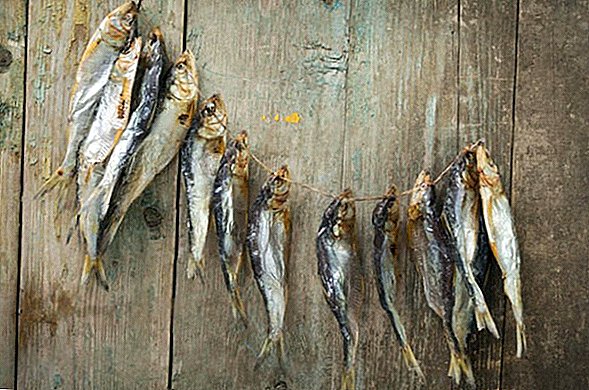
What to hang and where to dry
For hanging use a thin rope made of natural materials (in two or three weaving) or stainless steel wire. Future dried in hanging through the eye holes so that it does not come into contact when drying with each other. In this way, up to five carcasses can be dried on one piece of cord.
Such garlands of taranka hang in a draft in a slightly shaded place. Some fishermen prefer to hang out a future driedfish for 3-5 hours in the sun to dry, after which they move a shady and windy place. It is the wind that helps dry the carcass faster. With good weather, three or five days is enough for complete drying.
If the weather is not suitable (cold and humid), then large fish will cut the abdomen and insert several transverse rods into it. The attic (with open through windows) is perfect as a place for drying fish. The most suitable temperature for drying fish is + 18C ... + 20C.  You can hang fish for drying at different times, this is a matter of taste:
You can hang fish for drying at different times, this is a matter of taste:
- Some prefer to hang it at night, arguing that the top layer of fish skin that has dried at night will be less attractive for its smell of flies.
- Others dry only during the day, in good weather, hiding the "drying" into the room for the night. They explain it there, that when the day and night temperature drops, the taranka becomes damp and loses its taste.
- Still others, on the contrary, try to podgadat the beginning of curing precisely to wet and rainy weather, claiming that this fish, although it dries longer, is juicier and tastier.
Fighting flies
To combat insects during drying, there are several ways:
- After soaking the carcass is rinsed in a solution of water and vinegar. For 10 liters of water, add 6 tablespoons of vinegar essence. Some prefer to soak fish in this vinegar solution for 5 or 10 minutes. The smell of vinegar, of course, scares off insects, but at the same time somewhat degrades the taste of taranka.
- Fish heads are lubricated with vegetable oil.
- Carcass rubbed with chopped garlic.
- Hanging carcasses are wrapped in a gauze canopy so that insects do not find a loophole and do not get inside.
 Gauze canopy can be sprayed with vinegar (9%) using a spray bottle or rubbed with chopped garlic in several places - this will not affect the taste of the future dried fish.
Gauze canopy can be sprayed with vinegar (9%) using a spray bottle or rubbed with chopped garlic in several places - this will not affect the taste of the future dried fish. - Drying carcasses are coated with a special ointment against flies (vinegar 9% and sunflower oil in a ratio of 1: 3). Flies avoid an unpleasant smell, and also do not sit down on sticky oil.
Did you know? The biggest fish in the world is the giant whale shark, which can grow almost the length of two school buses. It has more than four thousand tiny (3 mm) teeth, weighs about 25 tons and feeds mainly on plankton.Video: fight against flies while drying fish
How to dry in the winter
Felling fish in the winter is necessary for the same technology as in the summer. The only difficulty is in the drying process. In winter, the fish also dries out, but it will take a little longer to complete readiness than in summer.
To listen to the carcass hung on a warm loggia or glassed-in balcony. To create a light draft, balcony windows and windows open slightly. You can also dry in the room, if the owners are willing to endure a rather peculiar smell.
Important! In no case it is impossible to dry the fish in the winter with the help of installed near the heaters or near the battery. What happens as a result of this "jerking" practically not edible.

How to fry fish in the oven
According to this recipe, you can make a dried delicacy from any (not too large) carcass. For this capelin, perch, crucian carp, small carp or small silver carp will do. For cooking, use the oven and food foil.
Ingredients:
- a fish;
- salt;
- Bay leaf;
- black pepper.
Training:
- The catch is gutted and washed, and then dried using a kitchen paper towel.
- The carcass inside and outside is well rubbed with salt, black pepper and crushed bay leaf.
- Fish fit under the yoke and left for 48 hours for salting.
- After two days, the salted carcasses are washed, soaked for two to three hours in clean water and wiped dry with napkins or paper towels.
- Preheat the oven to + 40C.
- A dry (pre-salted and soaked) fish is placed in one row on a baking sheet covered with food foil. Heads of carcasses laid on a baking sheet should be directed to one side.
- The baking tray is set in the oven. The oven door remains ajar by 5-10 cm.
- Thus, the fish is dried for 2 hours. The temperature in the oven is maintained at + 40C. After the required time has passed, the baking sheet is taken out of the oven and covered with foil of fish heads.
- The baking tray is set back in the oven for another 3-4 hours.
- After that, the well-dried up carcasses reach and strung on a rope or wire.
- The resulting kukan is hung out for drying to fresh air. The place is cool and windy.
- In two or three days, dried fish from the oven is ready.
 Secrets of perfect cooking:
Secrets of perfect cooking:- For drying in the oven, it is better to take non-oily fish (roach, vobla or crucian).
- If you need to hunt large carcasses, then make a cut along the back to the ridge (this will facilitate and speed up the process).
- In order not to bother with threading the rope through the eye holes, use a paper clip (making a hook from it).
- For long-term storage of dried fish before packing in foil or polyethylene smeared with olive oil.
Did you know? In Japan, fugu fish is a popular but deadly dish. Its insides contain the deadly poison - tetrodotoxin. In order to be eligible to prepare a fugu dish, the chef must obtain a certificate from a special school that teaches the preparation of this poisonous fish.

How to determine readiness
Before use, the product must be checked for readiness and quality:
- If the drying process is completed, the meat structure becomes translucent, no salt is visible on the surface of the carcass.
- If the taranka is clearly dry, the situation can be corrected by placing the fish in a wet canvas, wrapping it and sending it overnight to a cellar or refrigerator. In the morning, dried meat will be softer and more elastic.
- The finished fish is bent in half (head to tail). If the taranka returns to its original state and is springy, it means that it is ready for use.
Important! To dried fish acquired the best taste it needs to infuse. Therefore, the product removed from drying is laid on ripening (2-3 weeks). To do this, choose a cool place with drafts (for better ventilation).

Dried fish at home recipe
Dried carp (dry salting)
- Carp can be cleaned of viscera, then rinsed well.
- Prepare an enamel or plastic basin of suitable size.
- Cover the bottom of the pelvis with a layer of coarse salt (1 cm).

- Before putting the carp in the pelvis, each carcass is poured salt under the gills. After that, the fish is laid in a dense layer.

- Lay the first layer on top well sprinkled with salt.

- If there is still fish, then the second and all subsequent layers are laid down in the same way.
- The top (last) layer is also generously sprinkled with salt.
- Above the salt, the oppression is placed on which the load is placed. A lid from a bucket or pan, with a diameter slightly smaller than the diameter of the basin, will be suitable as a yoke. As a cargo, you can use a five-liter plastic bottle filled with water and installed on top of an inverted lid.

- A basin with pickled carcasses is installed in a cool place (refrigerator or cellar). During the weeding, carp will secrete juice, which can rise above the lid under the yoke, this juice is not necessary to drain.
- Крупные карпы просолятся за три дня, для мелких будет достаточно двух дней.
- Salted carcasses are taken from the brine, washed thoroughly and placed for half a day in a cold, unsalted water for soaking, after which they are suspended in a draft until completely dry. In 5-6 days the dried carp is ready.

It is almost impossible to salt carp in such a way, as it takes as much salt as it needs. In the process of soaking the water will draw out all the excess salt. If for any reason the fish were not taken out of the brine for 3 days, that's okay, but it will take a little longer to soak it in clean water (about a day).
Squeeze the ram (salt in brine) We take a ram of average size, but weighing no less than half a kilogram. For a smaller fish suitable dry salting.
We make a strong tozluk:
- On a three-liter jar of cold water, add 150-180 g of salt. The solution is stirred until the salt is completely dissolved in water.
- The strength of the brine is checked using a raw egg, in a suitable brine the egg does not sink, but floats on the surface.
Pickling:
- Ram (not gutted) is laid in dense rows.
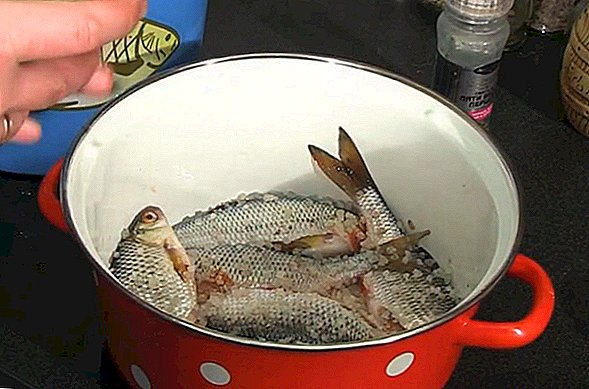
- The laid carcasses press down from above with a yoke so that the fish do not float when filling with brine.

- On top of the yoke poured ready brine.
- Tuzluka is sufficient when it completely covers the fish and slightly protrudes above the yoke (2-3 cm).

- Capacity with salting is transferred to a cool place, and left for three to four days for salting.
- The finished fish is taken from the brine and placed for soaking. For a small ram it is enough to soak for half an hour, and for a large one it takes 4 to 6 hours.

Soaking and drying the ram:
- In the process of soaking the water changes several times to clean. Before the first water change, the soaked ram needs to be taken out of the water and spread on the table. Carcasses should be allowed to lie down a bit in the fresh air, this will help to evenly distribute salt in the meat. After that, the soaking should continue.
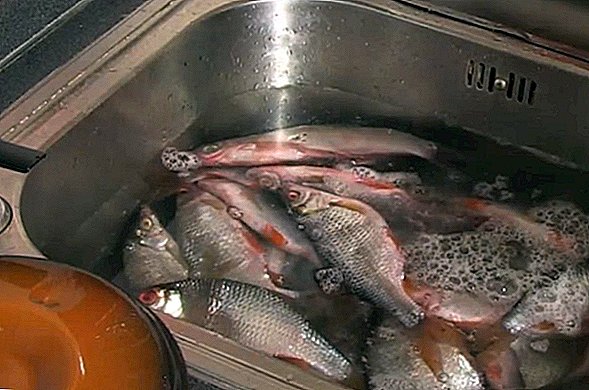
- At the end of the soaking ram hang out to dry in the shade in a draft.

In the finished ram meat acquires an amber color and becomes slightly transparent.
Dried pike (dry salting):
- The pike is washed (in the winter without gutting), on the carcass is made on both sides by 2-3 transverse sections.
- Capacity with a suitable bottom is taken (the pike should be completely lowered on the bottom).
- Salt is poured at the bottom of the pickling vessel (the layer must be at least 0.5 cm thick).
- Pike is placed on the salt layer and is also generously sprinkled with salt over it.
- If there are several fishes, they are stacked on top of each other, each time sprinkling salt.
- On top of the top pike, the last layer of salt is poured and the lid is laid with a nest.
- If a large pike is salted, the container is placed in a cool place for 48 hours. If the fish is small, 24 hours is enough.
- Salted pike are washed and drained in a draft to dry until ready.

Important! When drying pike, the most important thing is not to miss the moment when it will be ready. If you miss a little, then instead of juicy dried meat you get a dried product. Dried pike is an excellent beer snack.
Storage
Experienced fishermen claim that as far as storage dried fish matures and becomes only better.
Where to store:
- Suspended in a cold and blown place, in a bag of natural fabric.
- Laid in a basket from willow branches with a cover. Such a basket should stand on a draft in a shaded and cool place (not in the sun).
- In the kitchen cabinet - securely and tightly wrapped in plastic, parchment, food foil or film.

There is nothing difficult in the preparation of dried fish, it is easy for both experienced fishermen and beginners to cope with this. It is safe to say that even a beginner will get dried fish the first time. You can always treat your family and friends with this delicacy, because it is cooked with your own hands, it will be much tastier than purchased one.
Reviews from the network
Ointment from MUH "
For 1 volume of vinegar we take 3 volumes of sunflower oil, mix and lubricate with this "Provensace" hung fish. Flies do not sit on the butter and spin in ecstasy around the taranka, if any creature still sits - do not worry about the eggs, it will not postpone! The only drawback of this ointment is that after a month the taranka begins to "rust", but the taste is only improving. The same ointment is good for sunburns, but it is better to apply it in the men's team (women sometimes do not understand that health is more valuable than the opinions of others. Dry salting. (For preservation) A clean linen cloth or sackcloth is laid on the bottom of the basket or wooden box. Prepared fish placed on it in dense rows, head to tail, belly up and sprinkled with salt. The total salt consumption is 1.5 kilograms per 10 kilograms of fish. On top of the fish lay a knocked out of wood cover and on it - heavy yoke (stone). It is absolutely necessary , t It prevents the formation of air cavities in which putrefactive bacteria can develop, and, moreover, makes fish meat more dense. After a while, juice is released from the fish, it flows out through the gaps between the bars of the basket or the boards of the box. the day the fish is salting out.All this time it should be in a cool place (refrigerator, cellar). PS When rafting down the North River, we used the following fish salting recipe (grayling and lenok): Salting was done every 40-60 minutes of fishing - every carcass was cleaned from scales cut off Whether the heads, the carcass was opened from the back, washed out necessarily so that there was no bleeding along the spine, then the whole carcass was coated with large rock salt and placed in a metal can with a lid with small holes, every evening it was necessary to turn the can with the lid downwards so that flowed out the salting, while the salt concentration does not increase, the fish does not overwhelm, the meat remains elastic and tasty.












 Their meat is tasty, but in the process of drying small fishes become so humbled that it is almost impossible to separate the meat from the dry skin.
Their meat is tasty, but in the process of drying small fishes become so humbled that it is almost impossible to separate the meat from the dry skin.

 Gauze canopy can be sprayed with vinegar (9%) using a spray bottle or rubbed with chopped garlic in several places - this will not affect the taste of the future dried fish.
Gauze canopy can be sprayed with vinegar (9%) using a spray bottle or rubbed with chopped garlic in several places - this will not affect the taste of the future dried fish.









